Liqiang Zhao
Multi-objective Optimization of Space-Air-Ground Integrated Network Slicing Relying on a Pair of Central and Distributed Learning Algorithms
Sep 22, 2023
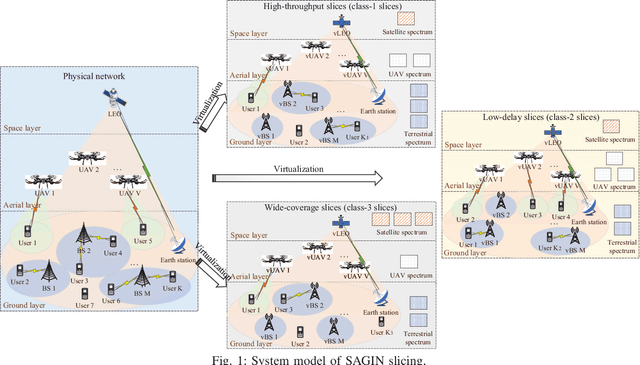
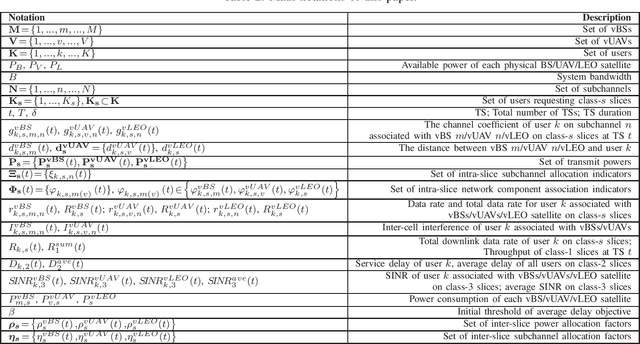
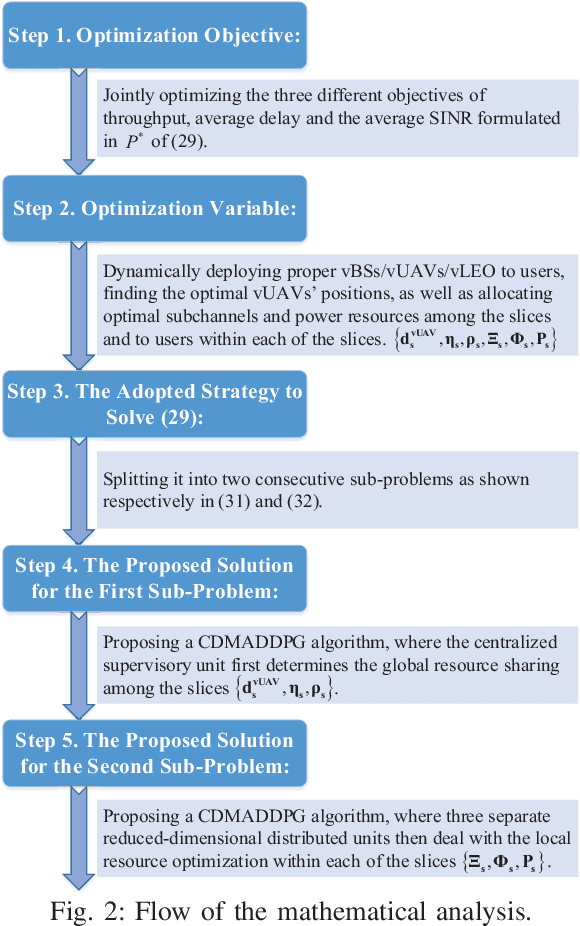
Abstract:As an attractive enabling technology for next-generation wireless communications, network slicing supports diverse customized services in the global space-air-ground integrated network (SAGIN) with diverse resource constraints. In this paper, we dynamically consider three typical classes of radio access network (RAN) slices, namely high-throughput slices, low-delay slices and wide-coverage slices, under the same underlying physical SAGIN. The throughput, the service delay and the coverage area of these three classes of RAN slices are jointly optimized in a non-scalar form by considering the distinct channel features and service advantages of the terrestrial, aerial and satellite components of SAGINs. A joint central and distributed multi-agent deep deterministic policy gradient (CDMADDPG) algorithm is proposed for solving the above problem to obtain the Pareto optimal solutions. The algorithm first determines the optimal virtual unmanned aerial vehicle (vUAV) positions and the inter-slice sub-channel and power sharing by relying on a centralized unit. Then it optimizes the intra-slice sub-channel and power allocation, and the virtual base station (vBS)/vUAV/virtual low earth orbit (vLEO) satellite deployment in support of three classes of slices by three separate distributed units. Simulation results verify that the proposed method approaches the Pareto-optimal exploitation of multiple RAN slices, and outperforms the benchmarkers.
Beyond 5G Networks: Integration of Communication, Computing, Caching, and Control
Dec 26, 2022Abstract:In recent years, the exponential proliferation of smart devices with their intelligent applications poses severe challenges on conventional cellular networks. Such challenges can be potentially overcome by integrating communication, computing, caching, and control (i4C) technologies. In this survey, we first give a snapshot of different aspects of the i4C, comprising background, motivation, leading technological enablers, potential applications, and use cases. Next, we describe different models of communication, computing, caching, and control (4C) to lay the foundation of the integration approach. We review current state-of-the-art research efforts related to the i4C, focusing on recent trends of both conventional and artificial intelligence (AI)-based integration approaches. We also highlight the need for intelligence in resources integration. Then, we discuss integration of sensing and communication (ISAC) and classify the integration approaches into various classes. Finally, we propose open challenges and present future research directions for beyond 5G networks, such as 6G.
Model-driven Learning for Generic MIMO Downlink Beamforming With Uplink Channel Information
Sep 16, 2021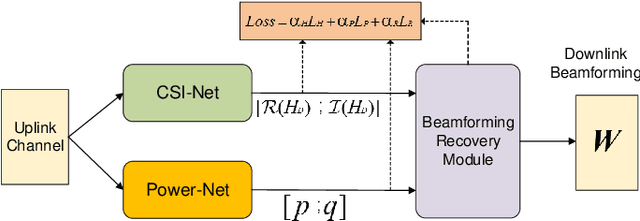
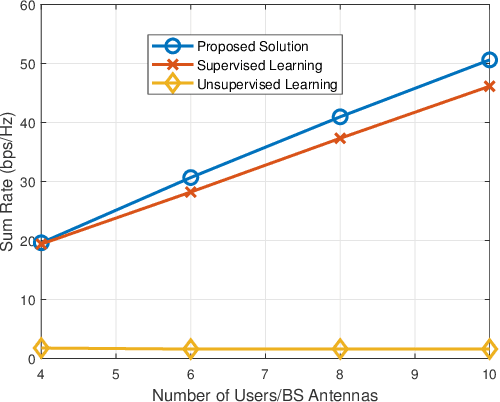
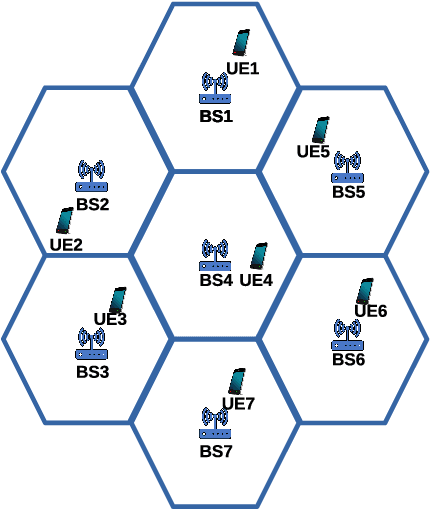
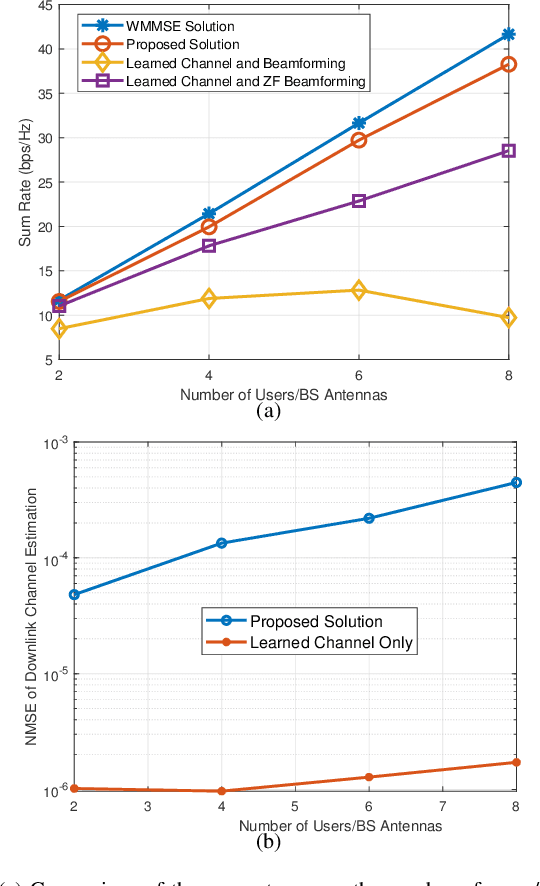
Abstract:Accurate downlink channel information is crucial to the beamforming design, but it is difficult to obtain in practice. This paper investigates a deep learning-based optimization approach of the downlink beamforming to maximize the system sum rate, when only the uplink channel information is available. Our main contribution is to propose a model-driven learning technique that exploits the structure of the optimal downlink beamforming to design an effective hybrid learning strategy with the aim to maximize the sum rate performance. This is achieved by jointly considering the learning performance of the downlink channel, the power and the sum rate in the training stage. The proposed approach applies to generic cases in which the uplink channel information is available, but its relation to the downlink channel is unknown and does not require an explicit downlink channel estimation. We further extend the developed technique to massive multiple-input multiple-output scenarios and achieve a distributed learning strategy for multicell systems without an inter-cell signalling overhead. Simulation results verify that our proposed method provides the performance close to the state of the art numerical algorithms with perfect downlink channel information and significantly outperforms existing data-driven methods in terms of the sum rate.
 Add to Chrome
Add to Chrome Add to Firefox
Add to Firefox Add to Edge
Add to Edge